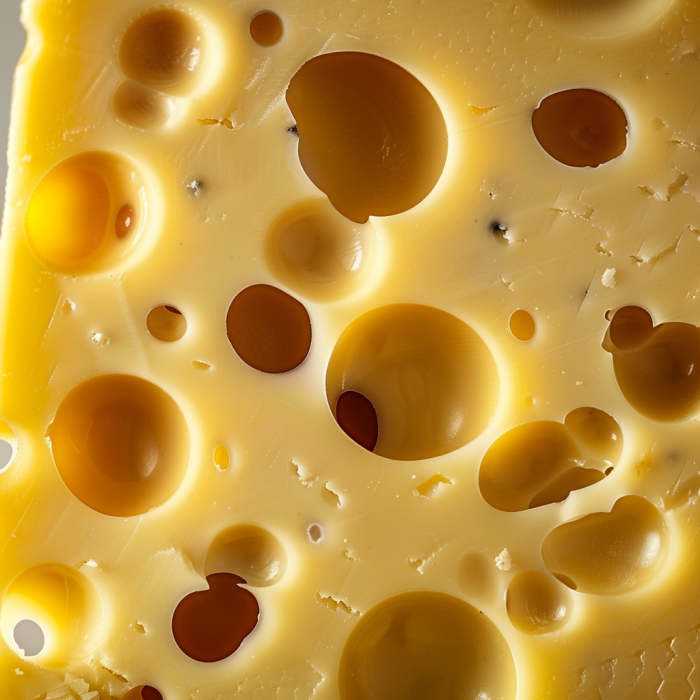What Defines the Unique Essence of Emmental Cheese?
MAY 18, 2024

The microbiological aspect of Emmental cheese is pivotal. Three primary bacterial cultures are integral in its fermentation process: Lactobacillus helveticus, Lactobacillus delbrueckii subsp. bulgaricus, and Propionibacterium freudenreichii. These cultures are responsible for lactic acid production, which greatly influences the cheese's pH levels and texture. The most unique aspect lies in Propionibacterium freudenreichii, which ferments lactic acid into carbon dioxide, acetate, and propionic acid. The carbon dioxide formation leads to the cheese's iconic holes, while the propionic acid contributes to its aromatic profile.
From a chemical perspective, the transformation of lactose into lactic acid by Lactobacillus species is crucial. The subsequent actions of Propionibacterium freudenreichii in the secondary fermentation phase convert lactic acid into aforementioned products. The resulting chemical reactions not only develop Emmental's distinctive flavor and texture but also play a crucial role in inhibiting the growth of undesirable microorganisms, enhancing food safety.
Sensory evaluation of Emmental cheese reveals its unique tasting notes; it is often described as nutty, slightly acidic, and buttery. The maturation period, which can range from several months to a year or longer, further intensifies these sensory attributes. Longer aging periods typically produce a sharper and more profound flavor profile.
In terms of food safety and hygiene, producing high-quality Emmental cheese requires strict adherence to sanitary conditions. Each step from milk collection, pasteurization, inoculation of bacterial cultures, to final aging must be meticulously monitored. Proper hygiene practices prevent the contamination by pathogens such as Listeria monocytogenes or Escherichia coli, which pose serious health risks.
Further, Emmental cheese's texture, often referred to as 'elastic' and 'creamy,' is resultant from the breakdown of casein proteins. Enzymes, such as chymosin added during the curdling process, play a pivotal role in hydrolyzing casein molecules, leading to a softer, more spreadable paste.
Lastly, consumers often seek Emmental cheese for its culinary versatility. Due to its excellent melting properties, it is a popular choice in fondues, gratins, and sandwiches. The balance of meltability and flavor composition renders it a staple in both gourmet and everyday cooking.
To conclude, Emmental cheese's unique essence is defined by a harmonious integration of microbiological fermentation, chemical transformations, thorough hygiene practices, and detailed sensory profiles. The resulting large eyes, aromatic nutty flavor, and creamy texture epitomize the meticulous science and art behind this beloved cheese.
More in Cheese Science
June 05, 2024
What Scientific Knowledge Underpins the Production of Havarti Cheese?
May 22, 2024
How Do Dairy Products Survive Zero Gravity?
May 18, 2024
What Defines the Unique Essence of Emmental Cheese?
March 24, 2024
How Does the Union of Cheese and Coffee Elevate Culinary Experience?
February 19, 2024
Unveiling the Science Behind Florette: Mastery in Cheese Making
January 27, 2024
The Multidimensional Role of Tyrosine in Cheese Maturation: A Biochemical Exegesis
January 24, 2024
The Myriad Intricacies of Cheese as a Valentine's Day Comestible
January 18, 2024
The Scientific Symphony of Parmigiano Reggiano Production